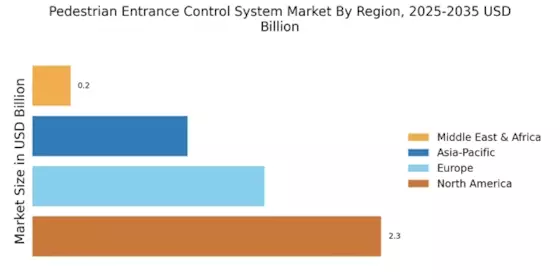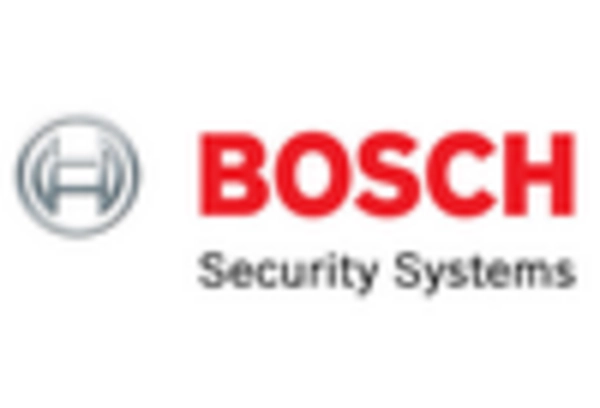Regulatory Compliance
Regulatory compliance is emerging as a crucial driver for the Pedestrian Entrance Control System Market. Governments and regulatory bodies are implementing stringent guidelines to ensure safety and security in public spaces. These regulations often mandate the installation of advanced access control systems in various sectors, including transportation, education, and healthcare. As organizations strive to meet these compliance requirements, the demand for pedestrian entrance control systems is likely to increase. The market is responding to this need, with manufacturers developing solutions that align with regulatory standards. This trend indicates a growing recognition of the importance of compliance in shaping purchasing decisions within the Pedestrian Entrance Control System Market.
Focus on User Experience
The focus on user experience is becoming a pivotal driver for the Pedestrian Entrance Control System Market. Organizations are increasingly recognizing the importance of providing seamless and efficient access for users. This shift is prompting the development of systems that prioritize convenience, such as touchless entry and mobile access solutions. Market data suggests that user-friendly systems are gaining traction, as they not only enhance security but also improve overall satisfaction. As businesses and public entities strive to create welcoming environments, the demand for pedestrian entrance control systems that facilitate smooth entry processes is likely to grow. This emphasis on user experience is shaping the future direction of the Pedestrian Entrance Control System Market.
Rising Security Concerns
The increasing emphasis on security in public spaces appears to be a primary driver for the Pedestrian Entrance Control System Market. As urban areas expand and populations grow, the need for effective security measures becomes more pronounced. This trend is evidenced by a reported increase in investments in security technologies, with the market for access control systems projected to reach substantial figures in the coming years. Enhanced security measures, such as biometric systems and automated barriers, are being adopted to mitigate risks associated with unauthorized access. Consequently, the demand for pedestrian entrance control systems is likely to rise, as organizations seek to protect their premises and ensure the safety of individuals. This heightened focus on security is expected to shape the future landscape of the Pedestrian Entrance Control System Market.
Technological Advancements
Technological advancements are significantly influencing the Pedestrian Entrance Control System Market. Innovations in automation, artificial intelligence, and machine learning are transforming how pedestrian access is managed. For instance, the integration of smart technologies, such as facial recognition and mobile access control, is becoming increasingly prevalent. These advancements not only enhance security but also improve user experience by streamlining entry processes. The market for these technologies is projected to grow, with estimates suggesting a compound annual growth rate that reflects the increasing adoption of smart solutions. As organizations recognize the benefits of these technologies, the demand for sophisticated pedestrian entrance control systems is expected to surge, driving growth in the market.
Urbanization and Infrastructure Development
Urbanization and infrastructure development are driving forces behind the Pedestrian Entrance Control System Market. As cities expand and new infrastructures are developed, the need for efficient pedestrian management systems becomes more critical. Urban planners and developers are increasingly incorporating advanced entrance control solutions into their designs to enhance safety and accessibility. The market is witnessing a surge in demand for systems that can accommodate high foot traffic while ensuring security. Reports indicate that investments in urban infrastructure are expected to rise, further propelling the need for pedestrian entrance control systems. This trend highlights the interconnectedness of urban development and the growth of the Pedestrian Entrance Control System Market.


















Leave a Comment